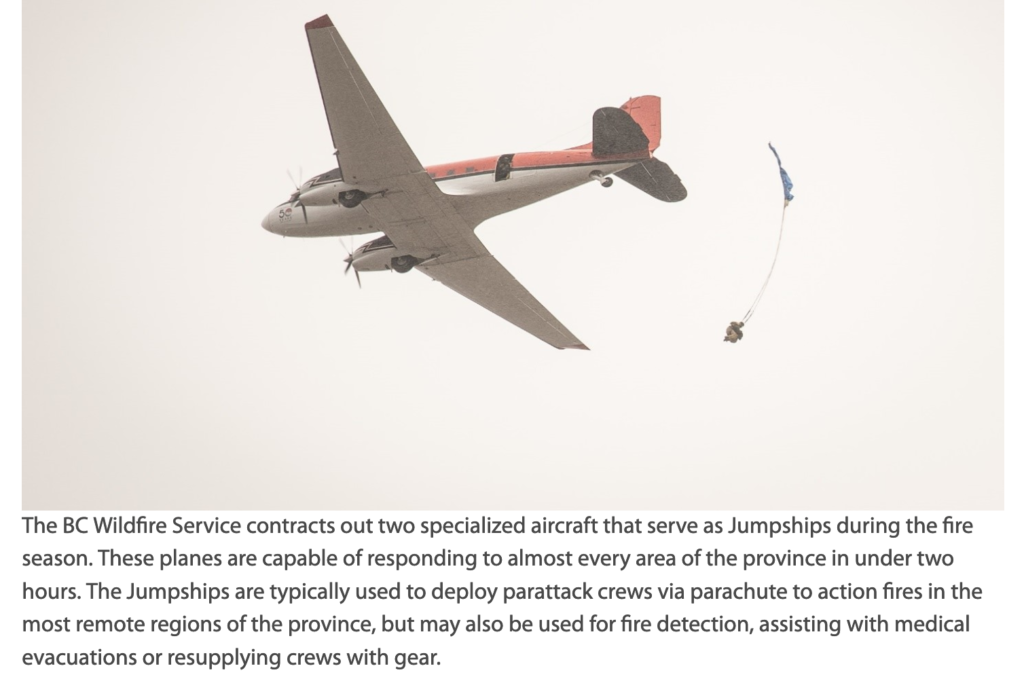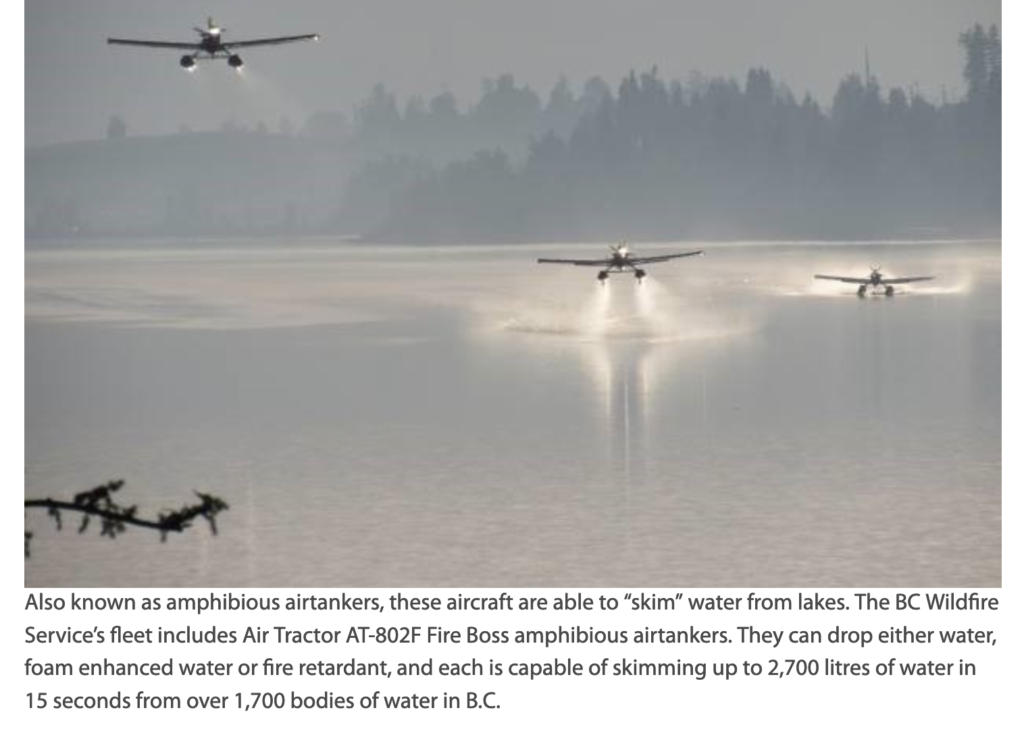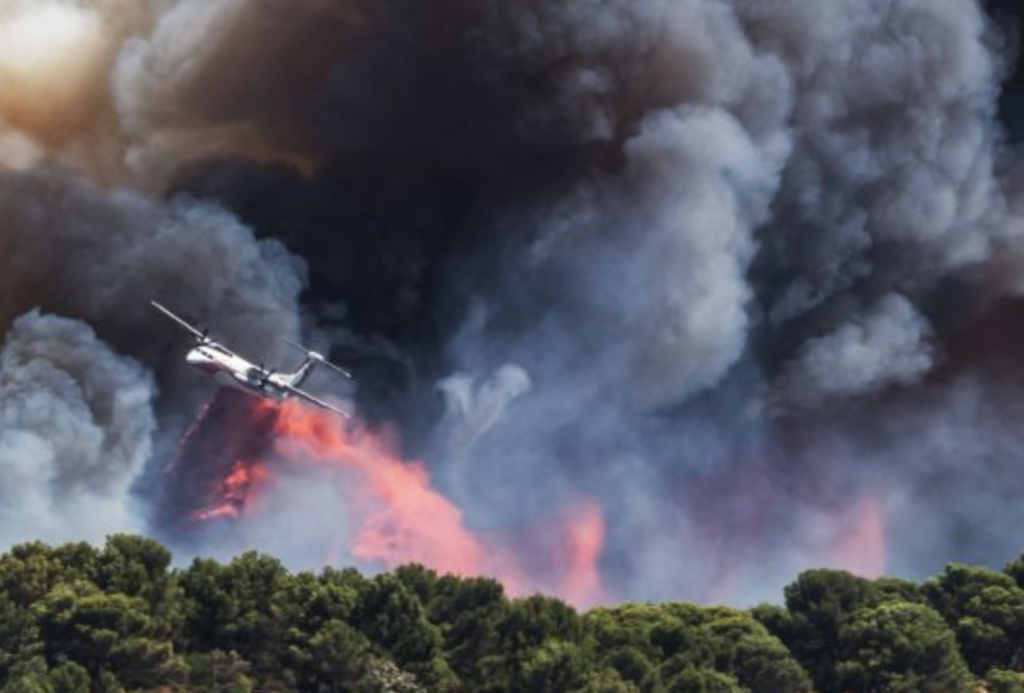The British Columbia Wildfire Service and its six regional fire centers coordinate the province’s wildfire suppression efforts in Canada’s southwestern province using strategies the service has developed over its 121-year history. One of its key strategies is an aviation fleet and program that makes the U.S. look like amateurs by comparison.
Western Canada forests are dense and often inaccessible from the ground, so the province relies heavily on its aerial firefighting program to keep fires from burning into huge mega-fires. The job of conducting aerial attacks has become more challenging in recent years due to hotter weather, lower humidity, longer and smokier fire seasons, and an ever-present load of fuels to feed fires. A recent report by the Prince George Citizen helps explain what Michael Benson knows from experience.
- British Columbia’s fire aviation program
- and fire management strategies
- and BC Wildfire Service aviation fleet
Before he joined Conair Aerial Firefighting this spring as the company’s director of business development, Michael Benson spent 17 years flying with the B.C. Wildfire Service as an air attack officer. For seven of those years he led the provincial airtanker program.
“From my perspective, British Columbia has the most advanced airtanker program in the world,” Benson declares, “and the power of the fleet is immense.”
From his base in Abbotsford, he explains that B.C. has a lot of planes and a lot of speed. “It’s quite an amazing fleet. Most people in B.C. just don’t know how fortunate we are to have such a mighty fleet and a competent wildfire agency managing the fleet.”
Conair Aerial Firefighting has 70 firefighting aircraft, 29 of which are based in B.C. alone. It is the world’s largest privately owned fixed-wing aerial firefighting fleet, operating in Canada, the U.S., Australia, and France.

Benson says other provinces are having to catch up to B.C.’s firefighting equipment and labor force capacity. Fire season started earlier this year in Alberta, Saskatchewan, Ontario, Quebec, and Nova Scotia — and more countries are facing similar wildfire battles brought on by climate change.
“One of the characteristics of this year is it wasn’t just B.C. that was busy; much of Canada was busy at the same time, and that creates some real challenges in that resources are shared across Canada,” said Benson. “Because the demand was so high nationally, it was difficult for any agency to free up their resources and help another agency. We have been lucky that in the USA it’s been an unusually slow season for them, so there has been some added capacity for them to come up to Canada.”
Five of the most destructive fire seasons ever in B.C. occurred during the past 10 years. Amphibious waterbombers that scoop from lakes or rivers are now often used alongside land-based tankers loaded with retardant — one of several adaptations B.C. has made in its fire aviation program. The scoopers fly over the fire to dump water and foam directly while the airtankers skirt the perimeter with retardant. Once those firelines are complete, the land-based tanker is free to go to another fire, while the waterbombers continue to dump water to cool the fire for ground crews.
Prince George is the base for five Conair aircraft for part of the season — a Cessna 208 Grand Caravan birddog that’s used to coordinate aerial attacks and provide air traffic control, plus four Air Tractor AT-802AF Fire Boss waterbombers. Benson says they work well together and it’s not uncommon to get 10 or 12 aircraft on one fire.

“For me, I think it’s the coolest job out there,” he says. “Working for an airtanker program you can effect change in a short period of time because the power of the fleet is incredible. The capability to have 15 or 20 airplanes on your fire in a short period of time gives you the chance to contain the fire and buy time for the hard-working ground firefighters to arrive and actually extinguish the fire.”

At its base in Abbotsford, Conair takes De Havilland Dash 8-400 twin-engine turboprops — commonly used for passenger flights — and in 75 days converts them into airtankers that can deliver 10,000-litre payloads — about 2650 gallons.
They offer more than double the fuel efficiency of other more traditional large tankers, and the loaded cruising speed for a Dash 8 is 360 knots (well over 400 mph), faster than most jets over short distances. First introduced as an airtanker in 2020 in Australia, there are now 19 Dash 8-400s flying firefighting missions around the world. Eight are owned and operated by France — built in Canada by Conair — with the rest operating in Conair’s fleet, four of which are on contract in B.C. this fire season.
Check out these videos on Vimeo:
Conair’s Tactics and Training Centre
Conair’s Changing Tactics
Conair’s Dash 8-400 Airtanker

“One of its key strategies is an aviation fleet and program that makes the U.S. look like amateurs by comparison…” Kelly – are you employed by Conair? Conair is a great organization, but that lead in statement really doesn’t help anyone – cheapens the rest of a great article…the U.S. is far from perfect and much of the reason Conair is “ahead” of the U.S. is the multiple hurdles that the Federal gov’t burdens U.S. operators with. Contracts? In Canada their contracts can be 10 year guaranteed (EU) contracts. That stands in STARK contrast to the growing use of Call When Needed contracts here in the U.S and the move away from the “guaranteed” 5 year EU contracts (which are really 5 one year contracts). Need capital to grow like Conair? SBA “Carve Outs” for small business protections in the U.S. limit the size of our AFF companies here and suppresses (pun intended) our operators ability to access the necessary capital to grow and invest in their fleets. Add these two reasons together and its surprising the U.S. has the size fleet it does – no thanks to the USFS, BLM or BIA – wake up folks – the States and other countries are going to start taking control of the U.S. fleet. Remove these two barriers and the U.S. fleet will look a lot more like it should. For the fun of it, let’s also make it really easy for U.S. operators to set up Canadian subsidiaries north of the border like the Canadians have done here and we’ll start having some real fun…much of Conair’s cash flow is driven of of the U.S. Aeroflite operations.
It is “real easy” for US companies to set up subsidiaries. Step one though is to have your aircraft Transport Canada compliant under an existing commercial category. A very extensive and costly procedure but at the end one has a platform that is as good or better than the manufacturer intended. The FAA is far more lenient when it comes to certification and this is the main reason why you won’t ever see N registered air tankers(less purpose built ie CL415, AT802 etc) achieve Transport Canada, European, Australian or likely any first world countries certification. As for long-term contracts, it is a shame the US can’t figure it out but Conair has to play by the same rules. Huge capital outlay with no guarantee of return prior to bidding a contract. Just look how they were left holding the bag on CL415s with no guaranteed work for a while. Aside for certification there are business laws requiring X% of ownership but helicopter companies have been doing this for years so it’s no big deal.
Hey Andy – good response – the “real easy” part is contradicted in your response by the description of the “extensive and costly” (and I’ll add politically challenged) process to get through Transport Canada compliance….If it was so easy, why have almost none of the U.S. operators been able to do it? It’s probably nice to lean on your belief that the U.S. and FAA are not 1st world certification entities, but that may be just a quick way to dismiss it. If the opportunity is there, which it is, the U.S. operators would be operating in Canada. SOMEHOW, U.S. operators haven’t been able to get through process….hmmm, I wonder why? Conair has 10 year contracts and little competition – so tell me how they’re “playing by the same rules”? The Aeroflite CL-415s all flew over 400 hours a year when they had no “guaranteed contracts”…they were just fine.
Ahhhhhhhh, huh? If everyone has to play by the same rules, in this case TC certification, but company A is not willing to do so, then how are they being disadvantaged? I don’t go to Italy and drive by American rules and expect to get away with it because it’s not fair to me. And how does the fact the 415s flew have anything to do with the instance they had no guaranteed work? What would you be saying if the AC flew 0 hours? And here is a tip: Everyone else knows the FAA is not a 1st world operation by virtue of the fact N reg aircraft modified for firefighting cannot get certified outside of the FAA…by anyone, anywhere ever. Period.
Remember this fire? And the GAO report?
https://wildfiretoday.com/2011/12/17/gao-formally-releases-report-on-station-fire/
Yep. An outstanding organization and they’ve historically been big users of PHOS CHeK. They do have their act together!